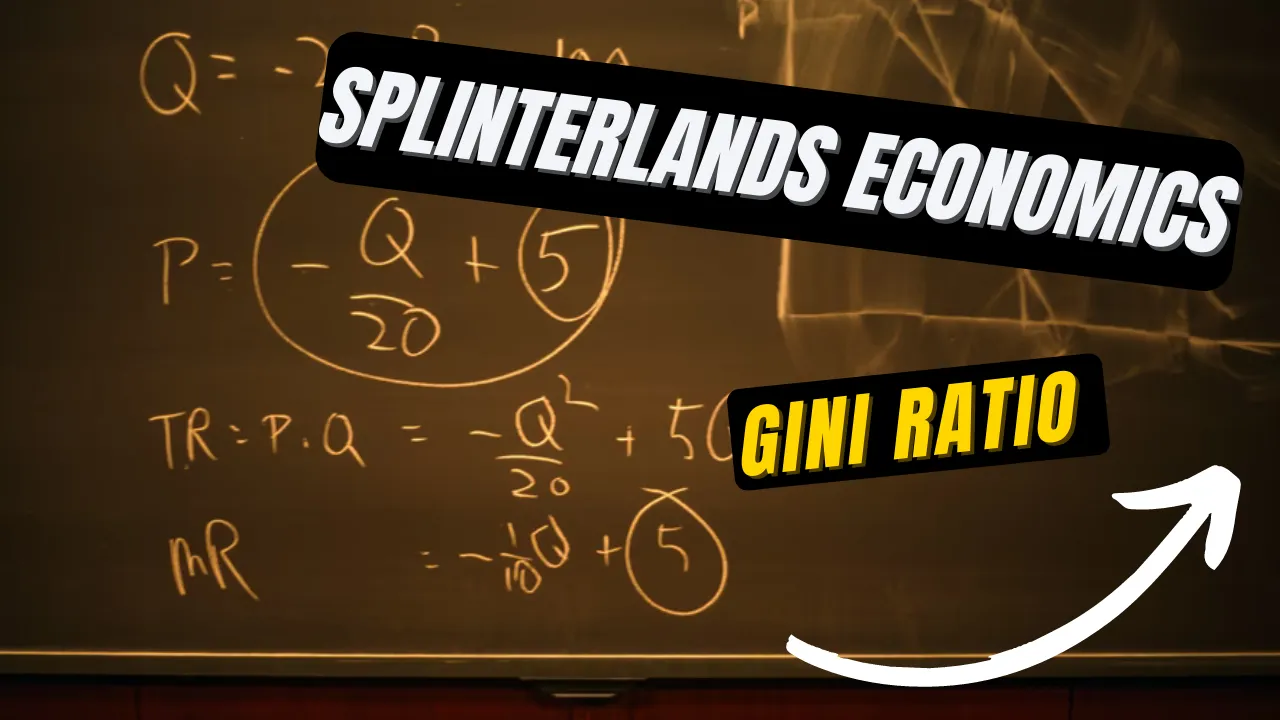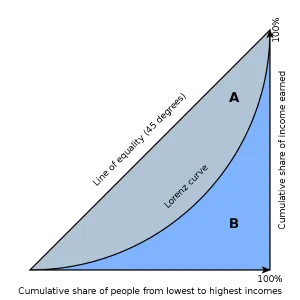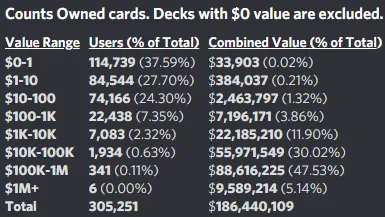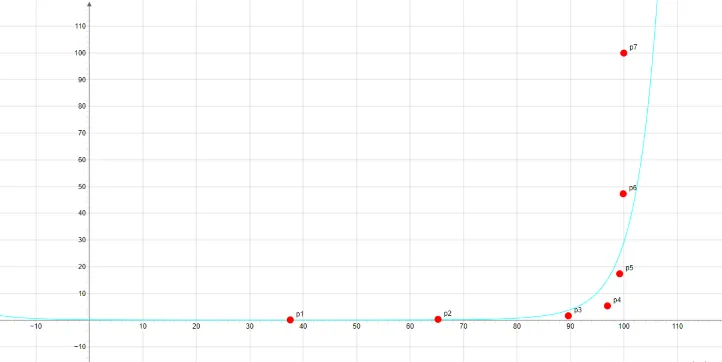Hello everyone! We are back again today with another edition of Splinterland Economics - a series in which we introduce a basic economic concept and then apply it to Splinterlands. If this is your first time reading, just to tell you a little bit about myself: my day job is in an unrelated area but I consider myself a little bit of economics nerd - I read a little (or maybe way, way) more news than I should, double majored in econ, and am obsessed with optimization. I love the way Splinterlands is equal parts card game and resource allocation game. My goal with these articles is to share a little bit of what I know with you all.
Our topic this week is the Gini Ratio. This is a concept that may be a little less practical in your day to day gameplay, but understanding the concept gives us some insight into the Splinterlands economy on a large scale. For me personally, looking at Splinterlands taking this concept into account gave me a brand new appreciation for the work that the Splinterlands developers and the community do. Anyways, on to our subject!

What is the Gini Ratio?
The Gini Ratio (or Gini Coefficient) is a measure of how wealth is distributed in an economy. A very closely related concept is the Lorenz curve - a graph of the percentage of wealth held by the percentage of the population. In a population where wealth is perfectly evenly distributed, the curve will be a straight line. The more unevenly, the steeper the curve will be.

This is an example of a Lorenz Curve (sourced from Wikipedia). The Gini Ratio is the area between the Lorenz curve and line of equality (A) divided by the total area under the Line of Equality (A+B). An economy with evenly distributed wealth will have a Gini Ratio of 0, and an economy with perfectly unevenly distributed (i.e., all assets held by a single individual) would have a Gini Ratio of 1.
As you might imagine, most countries will have a Gini Ratio somewhere between those numbers. As of 2021 (Source: World Bank), some of the countries with the highest ratios corresponding to greater inequality include South Africa (.630), Namibia (.591), and Brazil (.534). Among the lowest corresponding to greater equality are Slovenia (.246), the Czech Republic and Slovakia (both with .250). A few more countries of note: the United States at .411, the Philippines at .423, and Canada at .333.
Income inequality in the real world is often (though not always) associated with slower economic growth, poor working conditions, and (perhaps as a result) greater political instability.
How do we apply it to Splinterlands?
You might wonder how we can figure out the wealth distribution in Splinterlands. Well, there's actually a handy function on the Splinterlands discord (it's in the sm-voters_hut channel, if you want to take a look for yourself - the command is "$value"). What you get as a result is a table like this one:

This is very interesting to me because it lets us see a breakdown of exactly how many of the cards (or at least the card values) are held by how many players. Plugging in the data and (very roughly) graphing it allows us to approximate the Lorenz curve of the Splinterlands population.

Yes, the line isn't a perfect fit. Don't worry - when I was doing the Gini Ratio calculation I was using the actual numbers from our data set, and not the curve. Moving on!
So looking at the curve, you may notice that it seems very steep. And in fact, you would be correct! The Gini Ratio for Splinterlands comes out to be approximately .976 - a number which is a whole lot closer to 1 than it is to 0, and significantly higher than any of the real life countries mentioned in the previous section. That means that the card value of Splinterlands is very heavily weighted towards a small number of players.
Anyone who has been around Splinterlands for a while is probably not surprised that the bulk of the card value is concentrated among a relatively small number of people. Players who have been with the game for a long time have grown with it as the game has exploded, and have impressive collections. The large number of bots and free to play players also likely contributes to this wealth inequality.
Why should we care?
In the real world, income inequality is generally seen as a bad thing. And in Splinterlands it probably isn't ideal. You may notice, however, that many of the problems associated with inequality in the real world do not apply to the virtual world of a game. And even more importantly, the game developers and community have come together to make sure that everyone still has access to a fun (and potentially profitable) game experience. Just to provide a few examples: the developers have implemented a rental system which allows everyone to play with high value cards, proper team selection allows players with lower-leveled cards to make strong strategic decisions and win against more expensive cards, and anyone who spends a long enough time on Discord, Hive, or Twitch can probably tell you that the Splinterlands community loves (LOVES!) to do giveaways.
This is great for the newer players because it allows them to be competitive, and also results in a small amount of wealth redistribution. It's also great for the older players because newer players sticking around is how we can all grow as a community and keep the game healthy.

For better or worse, it is important to recognize that the Splinterlands team and community are working in a very unequal (asset-wise, at least!) environment, and that many of the economy and game design decisions are made in that context.
I'm not going to say that the Splinterlands economy is perfect - like most things, it is a work in progress that requires plenty of care and attention to keep in order. However, I do appreciate how good game design and an extremely generous and caring group of players have come together to make a great gaming experience for a wide range of players with vastly different amounts of reources.
Thank you so much for reading all the way to the end. Interested in seeing some more of my writing in the future? Be sure to give me a follow! In the meantime, if you'd like to see some of my recent posts:
Something Lingers in the Shadows: Using Shadow Snitch in Battle! - This week's battle challenge, featuring Shadow Snitch!
Splinterlands Economics: Competitive Advantage - An overview of the concept of competitive advantage, and how we can apply it to Splinterlands.
Welcome to Struggletown, Population - Me: Using Feral Spirit in Battle! - Last week's battle challenge, featuring Feral Spirit!
Thinking about giving Splinterlands a try but haven't signed up yet? Feel free to use my referral link: https://splinterlands.com?ref=bteim, and be sure to reach out to me if you have any questions!